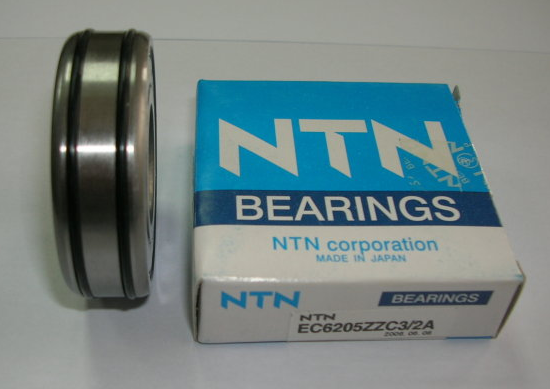
 News
News
The origin of NTN bearings is Japan, which is an old bearing company with a long history. The following is a detailed explanation of the causes of NTN failure and the analysis of the failure. During the working process of the bearing, the surface degraded layer has a mechanical principle. According to the surface grinding heat and grinding force, there will be different failure reasons. NTN's common failures will have different types of failures according to different models. For this reason, the following is a collection of some common NTN failure analysis situations as follows:
NTN bearing 32030XU online, contact us for more details.

1. Bearing burning
There are many large-size alloy abrasive grains and ferrous metal oxides in the iron spectrum.
2. The bearing surface is strained
Cutting abrasive grains are found in the iron spectrum, and the abrasive grains are non-ferrous metals.
3. Strain on the journal surface
There are iron-based cutting abrasive particles or black oxide particles in the iron spectrum, and the metal surface has a tempered color.
4. Corrosion on the journal surface
Spectral analysis found that the concentration of iron is abnormal, there are many sub-micron particles of iron in the iron spectrum, and the moisture or acid value of the lubricant exceeds the standard.
5. Fretting wear of tile back
Spectral analysis found that the iron concentration is abnormal, there are many iron submicron wear particles in the iron spectrum, and the lubricant moisture and acid value are abnormal.
6. Corrosion of tile surface
Spectral analysis found that the concentration of non-ferrous metal elements is abnormal, and there are many sub-micron wear particles of non-ferrous metal components in the ferrogram, and the water content of lubricating oil exceeds the standard and the acid value exceeds the standard.
7. The tile surface peels off
There are many large-size fatigue exfoliated alloy wear particles and layered abrasive particles found in the ferrography.
Reasons for NTN bearing failure:
In the grinding process of the bearing, a large amount of energy is consumed in the contact area between the grinding wheel and the workpiece, and a large amount of grinding heat is generated, resulting in a local instantaneous high temperature in the grinding area. Using linear motion heat source heat transfer theory formula to derive, calculate or apply infrared method and thermocouple method to measure the instantaneous temperature under experimental conditions, it can be found that the instantaneous temperature of the grinding zone can be as high as 1000-1500℃ within 0.1-0.001ms. Such instantaneous high temperature is enough to cause high temperature oxidation, amorphous structure, high temperature tempering, secondary quenching, and even burn and cracking of the surface layer at a certain depth of the working surface.
Eric Bearing Limited provides high-quality NTN bearings 608ZZ,click here to buy it.
(1) Surface oxide layer
The steel surface under the action of instantaneous high temperature reacts with oxygen in the air, and it rises into a very thin (20-30nm) thin layer of iron oxide. It is worth noting that the thickness and surface of the oxide layer are important indicators of grinding quality.
(2) Amorphous structure layer
When the instantaneous high temperature of the grinding zone makes the surface of the workpiece reach a molten state, the molten metal molecular stream is evenly coated on the working surface, and is cooled by the base metal at a very fast speed, forming a very thin layer of amorphous state Organizational level. It has high hardness and toughness, but it is only about 10nm, which can be easily removed in precision grinding.
(3) High temperature tempered layer
The instantaneous high temperature of the grinding zone can heat the surface to a temperature higher than the tempering heating temperature of the workpiece within a certain depth (10-100nm). In the case of not reaching the austenitizing temperature, as the heating temperature increases, the surface layer will produce retempering or high-temperature surface grinding corresponding to the heating temperature. The total thickness of the modified layer is in a corresponding relationship. of. This shows that the thickness of the oxide layer is directly related to the grinding process, and the hardness of the tempered structure changes. The higher the heating temperature, the greater the decrease in hardness.
As a brand bearing trader, Eric Bearing Limited has provided high-quality bearings for more than ten years. The products have been exported to more than 50 countries and regions around the world. With its competitive prices, it has been accepted by customers and established a long-term relationship with them. We also look forward to establishing long-term trade relations with more customers in the future.